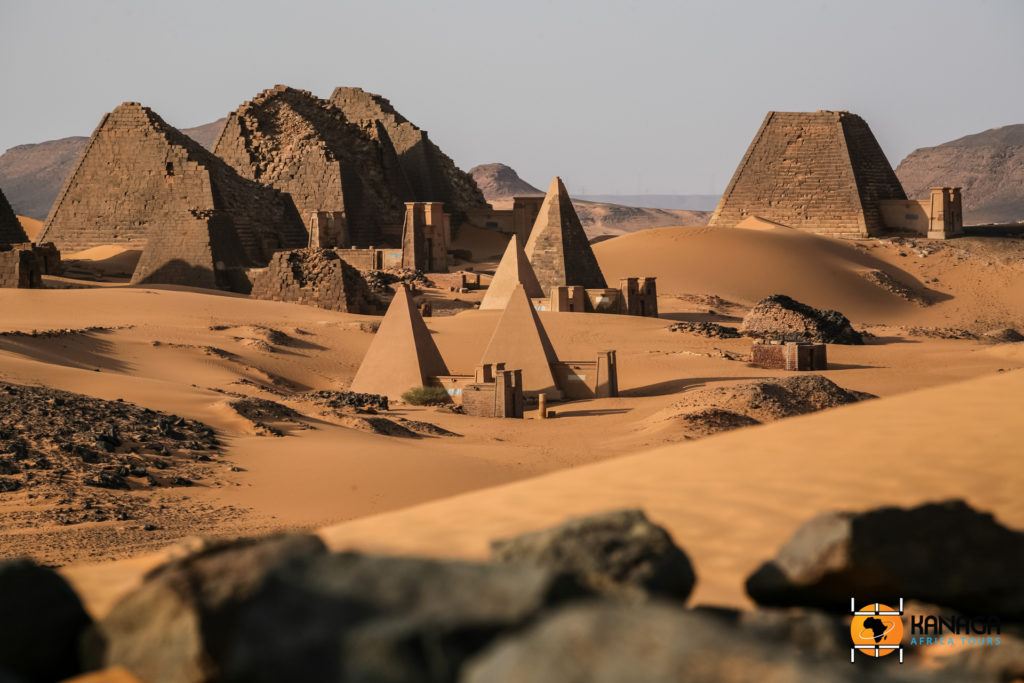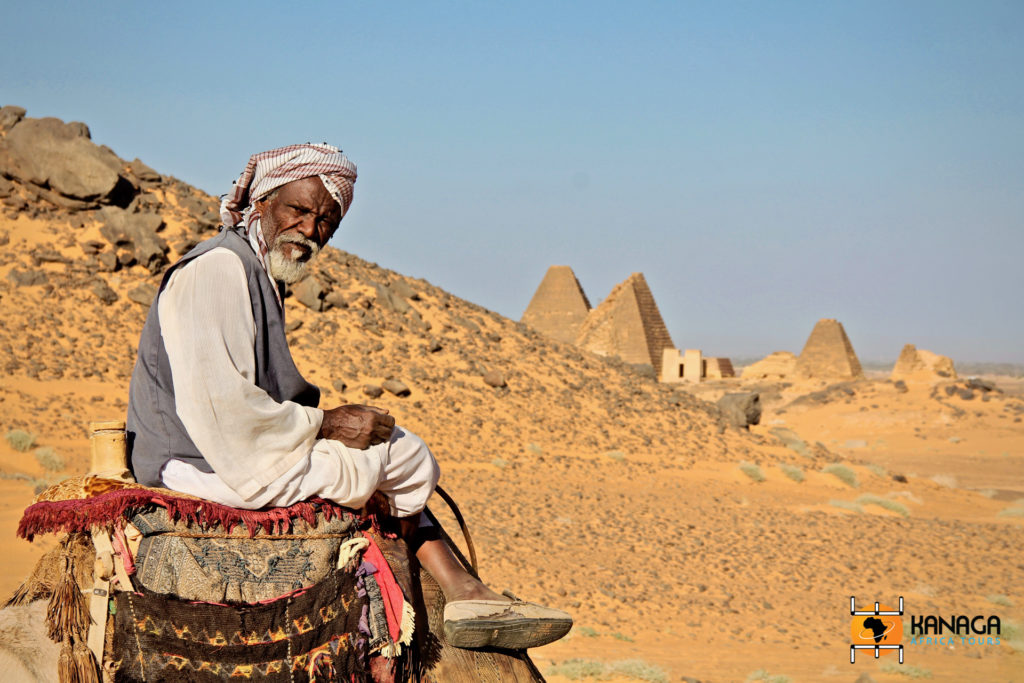Foto © Alte Vedute
The most interesting and famous archaeological ruins in Sudan are about 150 to 200 km north of Khartoum.
The first stop is at Musawwarat-es-Sufra, a site as mysterious as it is interesting. Even today we do not know exactly what function it was intended for, but it was probably built by order of a Meroitic king, as a spiritual centre and for breeding elephants, which are amply represented in the bas-reliefs and graffiti that adorn the site.
The remains of the city walls indicate that the settlement was one of the largest of the Meroitic period, with a temple to Amon, a deity dear to the Egyptians, immediately recognisable in the granite ram-shaped sculptures that mark the entrance avenue, and, a novelty in Neapolitan culture, a temple dedicated to the Lion god, an entirely indigenous deity, called Apademak, splendidly decorated with zoomorphic and anthropomorphic motifs.
The peculiarity of this site is that the walls have been used over the centuries as a support for inscriptions, engravings, graffiti, drawings with erotic and profane scenes, illustrations of all kinds.
At Naqa, not far from Musawwarat, another group of buildings of Meroitic culture are worth a visit. Here, the Amun temple, has preserved best of all the two main halls and a stele that allows the complex to be dated to the 1st century. But surely the particularity of this site is in the incredible mixture of cultural influences, where the Egyptian divinity is flanked by the Apademak temple, and not far away, by a kiosk with a colonnade of obvious Greco-Roman influence.
The place is really impressive, with a peculiar mélange of Corinthian capitals, lion sculptures, Egyptian bas-reliefs and a statue of the three-headed, four-armed god Apademak, which could almost look Indian-inspired.
Continuing northwards, we arrive at the jewel of late Kushite culture, from the Meroitic period, in what was the most important capital immediately after the return of the Black Pharaohs to Nubia, the city of Meroé.
There are dozens of pyramids here (originally 200), the most famous in Sudan, smaller and more pointed than the Egyptian ones, but no less interesting and spectacular. First of all, there are no box offices or street vendors (apart from a few camel drivers), and the freedom to wander undisturbed among these architectural wonders makes it a truly unique place with a magical atmosphere and setting.
The complex glows with indescribable colours in the light of dusk and dawn, so it is well worth setting up your tented camp nearby to spend the night. With their antechambers, a sort of chapels with pylons facing east and a false door, they were the burial place of the mythical Kings and Queens Mothers (the Candace) of Meroé, the oldest of which probably dates back to the 3rd or 4th century B.C. It was here that the incredible treasure of Queen Amanishakheto was (unfortunately) found, the most precious thing that Meroitic culture has passed on to us, but which led to the destruction and desecration of her sacred burial place. Today, some of the pyramids have been restored and plastered according to the ancient traditional technique, offering an idea of the splendour and enchantment that appeared to the eyes of the first European explorers. One still wonders today how such beauty could have been desecrated.







